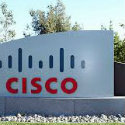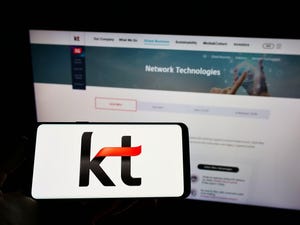Cisco Bows to Carrier Demand for Software Outside the Box
In a radical move, the world's biggest maker of Internet switches and routers will start selling its service provider software on a standalone basis.

Ever since it was founded in 1984, Cisco has thrived by selling Internet switches and routers that inseparably combine its hardware and software expertise. It has persisted with this lucrative arrangement despite mounting industry pressure for software that can run on generic boxes from other companies. When service providers moan about "equipment lock-in," Cisco's name is often on their lips.
But Cisco Systems Inc. (Nasdaq: CSCO) will hope the grumbling subsides after it this week appeared to overhaul its entire approach. Bowing to customer pressure, the company has promised to sell some operating systems unattached to Cisco hardware and allow customers to use that software on a variety of third-party devices.
By giving customers a hardware alternative, this "disaggregation" could have a nasty impact on Cisco's earnings. But continued resistance would probably be even more damaging. In recent years, Cisco has faced a growing challenge from rivals like Arista that already provide software without hardware. As those companies have won business with data center providers, Cisco's switching market share has declined from around 70% in 2010 to the "mid-50s" last year, according to James Crawshaw, a senior analyst with Heavy Reading. (See Cisco Takes Bold Software Step to Counter White Box Threat – Report.)
Figure 1: 
Challenges have more recently arisen in the telco world. AT&T Inc. (NYSE: T) has been developing its own "white boxes" -- the generic gear that comes without software -- as an alternative to the proprietary equipment it buys from Cisco and others. Only this week, AT&T said it would deploy 60,000 white box routers in its mobile network over the next few years. Powering those routers will be an open source operating system called DANOS, developed by AT&T but now overseen by the Linux Foundation, an open source group whose influence is growing by the day. (See DANOS Fuels AT&T's White Box Binge and AT&T Preps White Box Routers for 5G.)
"We don't see it as a threat and we have a strong track record of contributing to open source," says Sumeet Arora, the senior vice president of engineering for Cisco's service provider business, in downplaying the ramifications of the AT&T announcement. Yet Cisco's move is clearly aimed at satisfying the demands of service provider customers for more open networks. IOS XR, the Cisco operating system that telcos use, will now be able to run on white boxes as well as Cisco's own hardware, merchant silicon and x86 servers, says Arora.
Should all of its customers decide to run IOS XR on white boxes, Cisco could be in trouble. Although profit margins are higher in software than hardware (due to silicon development costs), any collapse in hardware sales would hit the bottom line. "The absolute amount of profit on the pure software solution will be lower than the current model of hardware plus software," Heavy Reading's Crawshaw told Light Reading last year.
Next page: No reason to panic
No reason to panic
But investors are certainly not panicked. On the Nasdaq, Cisco's share price was about $42 at the time of publication, down from a 2018 high of $45.55 on March 12 but up 28% from its level this time last year. The show of confidence is not that surprising. For one thing, resisting change would be far more negative in the long run. For another, Cisco is far less dependent on its service provider business than other equipment makers. While it does not provide a breakdown of its revenues, Analysys Mason, a market research company, reckoned in 2016 that about $11.1 billion of Cisco's sales came from service providers the previous year -- around 23% of total revenues. If the percentage remained unchanged, Cisco would have generated a little more than $11 billion in service provider sales in its last fiscal year. (See Huawei: New King of the CSP Market.)
That is still a very big sum, of course. But Cisco thinks most customers are not even looking for disaggregation, despite the white box hype. "The majority want our integrated systems," says Arora. "The ability to consume innovation from different players, integrate those players and manage the whole lifecycle requires a lot of capability on the part of customers."
For a leviathan like AT&T, which is even providing white boxes to other service providers, that may not be a problem. But few other telcos can be as sanguine. Even major players like France's Orange (NYSE: FTE) and South Korea's SK Telecom (Nasdaq: SKM) have sounded worried that dealing with multiple technology providers could be difficult operationally. Perennial complaints about the complexity of ONAP, an open source orchestration platform backed by AT&T and the Linux Foundation, reflect concern that integrating different technologies may become a Herculean task. (See Orange: Still No Clear Business Case for vRAN, vRAN Tech Hits Resistance at SK Telecom and Telefónica Starts Hunt for OSM Integrator Amid Open Source Doubts.)
Want to know more about the emerging SDN market? Check out our dedicated SDN content channel here on Light Reading.
Even so, if demand for disaggregation is not at fever pitch, it has evidently reached a level that Cisco cannot ignore. And it will pose fresh challenges for the company in the short term. How, for instance, does it guarantee performance on hardware that is not its own? "The ownership of the overall system and the network performance will fall on the integrator," says Arora. "That is something the industry will have to work out together in cases where this happens."
Ultimately, Cisco's future, and that of other hardware providers, will lie in the software business, as value continues to seep from one to the other. Cisco has been moving this way for several years, and hailed its software performance in its recent November-to-January quarter, when revenues grew 2%, to $11.9 billion, and net income rose 10%, to $3.1 billion, compared with the year-earlier period. "We continue to make progress as we shift the business toward more software and recurring revenue," said Kelly Kramer, Cisco's CFO, in an earnings statement. This week's move could mean some painful adjustments for a company with hardware in its DNA. But the reinvention is inevitable.
— Iain Morris, News Editor, Light Reading
Read more about:
EuropeAbout the Author(s)
You May Also Like












